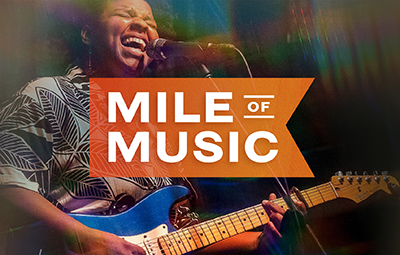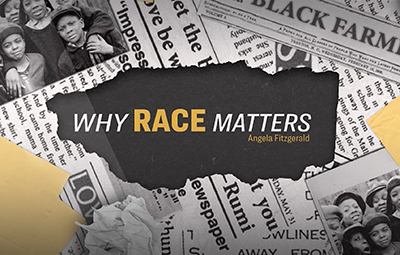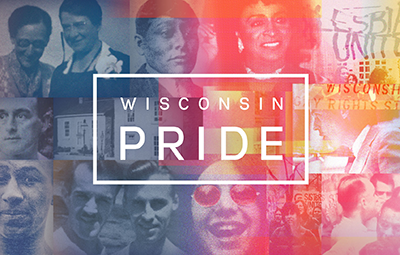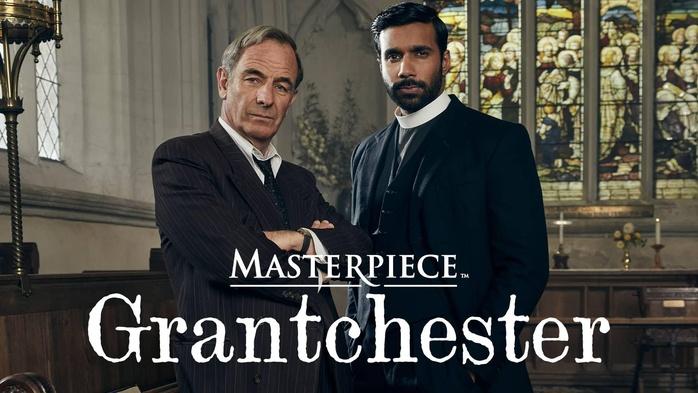– Francisco: I think being a musician is something that you do for the rest of your life and you just keep growing in it.
It’s one of those skills that you can’t say, “I’ve learned everything.”
It’s an art, and I think what art does and has done over the history of, you know, the world is allow us to convey meaning into our life that sometimes routine and habits don’t allow us to do.
[trumpet notes] [vocalists singing] My name is Francisco Hernndez.
I am the director.
I’m a vocalist and vihuela player of Mariachi Monarcas in Milwaukee.
– My name is Marianna Tellez.
I am a violinist and I’m also a vocalist in Mariachi Monarcas.
– [speaking Spanish] Mariachi Monarcas.
[upbeat music] [Francisco and Marianna singing in Spanish] – Francisco: Mariachi music stems originally from the regions in Mexico that had been colonized.
Mariachi has a set of subgenres.
The ones that originate from the state of Jalisco, which is where mariachi evolved from, are more about self-identity or sometimes just random events that people like to celebrate.
Sometimes you can see songs, what we call sones, in which the song is about celebrating the birth of cows, you know, or it can be about a set group of people, you know, a set of people that were at an event, a major event in the state, or maybe just about someone’s mom, et cetera.
It’s just a celebration.
– But there’s a lot of songs that are about emotion.
I always say they’re about heartbreak, love, or just celebrating Mexico.
So it’s really emotional, but it can be historical as well.
Typically in mariachi, there’s not going to be a lot of original compositions.
Every group will kind of write their own arrangements and add their own flair to it.
– I think there’s a lot of room to express ourselves.
There’s a lot of room to influence the people that are listening to us and bring about emotions to them too.
I think that’s one of the most beautiful things about mariachi music is how heavy some of the songs can be, but at the end of the day, you’re gonna still applaud to it for making you feel sad, you know?
That’s where the expression, the self-expression comes from.
– More recently, we’ve been doing popurrs, which are kind of like mashups of songs.
So we’ll pick a genre, we’ll pick an artist.
Recently, we wrote “Popurr Mexico,” which is a mashup of I think, like, four, five, six different songs that celebrate Mexico, and they just have really beautiful lyrics with that.
So in the mariachi, you have your violin section.
Usually that section’s a little bigger.
You have trumpets, you have a guitar, a vihuela, which is kind of like a smaller guitar with a brighter sound.
It has a bump on the back.
It’s really unique.
[bright vihuela music] And then there is the guitarrn, which is the bass of the group.
It’s kind of like a bigger version of the vihuela, but with less strings, and it’s basically the heartbeat of the group.
[mellow guitarrn music] A big thing about mariachi music that made me decide that I wanted to pursue it is just the sense of pride that not only you have when you play mariachi music, but that you see, if you see one of these big groups like Mariachi Vargas, it’s just such a proud moment to see your culture up there, and it shines, and it’s beautiful.
I’ve struggled with my identity, you know, being away from Mexico and living in the U.S., you do have sometimes that disconnect with the culture because you’re kind of in between cultures.
So I really kind of found a lot of my identity through mariachi music and that sense of pride, just, it still drives me to this day.
– What really got me interested in mariachi music was the elegance that comes with it and how you can play around with it and modify it.
There are traditional aspects that you need to keep in music and your setup, and the instruments that you have in mariachi music, you know, it is something that you have to respect as part of a tradition.
And in regards to the elegance of it, there is a respect, I think a discipline that you need to construct within yourself to be a mariachi.
You need to be always very clean with your attire and with your sound.
– So what we wear, they’re trajes de charros, so it’s typically, men will wear pants, women will wear a long skirt, and they have these middle, like, plates on the side called galas.
Sometimes they have bordalo, which is really beautiful embroidery on the sides.
They’ll have a vest and then they’ll have a jacket that goes on top of it that also has that embroidery or those galas, those metal pieces on ’em.
– It’s a traditional attire that’s very, if someone wears it wrong, it can cause a lot of commotion in the mariachi community.
I think it is about maintaining the dignity of the music.
And since it is oral tradition, the best way to do that is by keeping each other accountable.
I’d say mariachi music a lot of times has that, especially in showcase performances, has that perspective of presence and a little bit of showing off, I think.
And what you wear has a huge influence on how you present yourself to your audience.
You want to eventually wow them.
Something that I always like to see in the audience is that people, even though you might be playing like, a heartbreak song, they might not be going through anything, but they feel it.
And you might sometimes see people in the crowd do gritos, so it’s like a little shout that we do just to let it out, you know?
[undulating shout] It can be sad, it can be outta happiness, and it’s something that for people that are not familiar with the mariachi genre or with gritos that are done in Mexico, not just in mariachi, but just in general, you might see people going out, doing gritos just to feel themselves.
It’s something that’s kind of, like, welcoming to us as artists, and we know that we’re pleasing our audience, not just from a musical perspective, but more from, it’s an indirect way of saying, “Oh, we’re of the same community, connected by our culture.”
– Marianna: Although there is a big Latino population here in Milwaukee, there’s not too many groups out here in the Midwest.
So I think it’s especially important to bring back that music that our parents would listen to as children, that we listened to growing up on the radios at home.
Really have that connection back to our roots and be able to share that connection and to be able to share those memories and that tradition with all of the people here.
It’s very important to not only have that culture brought back to our people here who might be missing it, who love it, but to also educate others on it as well.
– Not everyone with a Mexican soul lives in Mexico.
We are scattered all around the globe, and a good amount in the United States.
Sometimes, you know, we find ourselves in circumstances where people come and ask us about who we are, what’s our background, and living in a, sometimes in a city or a place where we are far away from our traditions, where we don’t have those people to pass down our traditions to us, it’s nice to find that little sense of identity.
[singers singing in Spanish] [crowd cheering] [bright guitar music]
Search Episodes

Donate to sign up. Activate and sign in to Passport. It's that easy to help PBS Wisconsin serve your community through media that educates, inspires, and entertains.
Make your membership gift today
Only for new users: Activate Passport using your code or email address
Already a member?
Look up my account
Need some help? Go to FAQ or visit PBS Passport Help
Need help accessing PBS Wisconsin anywhere?

Online Access | Platform & Device Access | Cable or Satellite Access | Over-The-Air Access
Visit Access Guide
Need help accessing PBS Wisconsin anywhere?

Visit Our
Live TV Access Guide
Online AccessPlatform & Device Access
Cable or Satellite Access
Over-The-Air Access
Visit Access Guide
 Passport
Passport






Follow Us